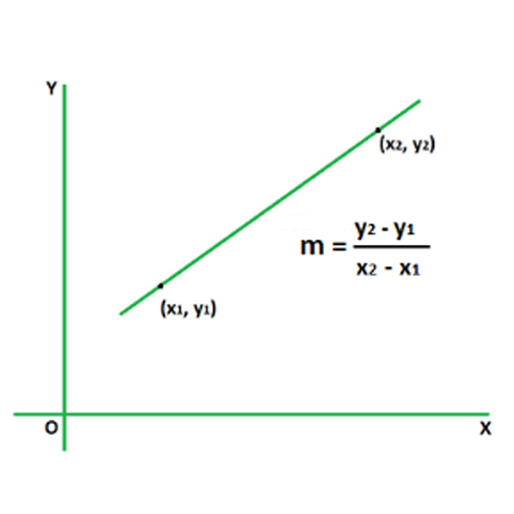Modified on
What is Shape function & integration points?

Skill-Lync
In finite element analysis (FEA), the object under study is divided into a finite number of nodes and elements by creating a mesh. Mesh is basically a set of mutually intersecting lines superimposed on the part. In such a mesh, the points at which two lines intersect are called nodes. The area or volume enclosed by a set of nodes is called an element. Thus simply speaking, nodes are the vertices of the elements.

In FEA, the answers are first calculated at nodes, and the results within the element are obtained by interpolation. But what is interpolation? How does it work? To understand this, consider the equation of a straight line: y = mx. Here “m” is the slope of the line, which is given by m = (y2 - y1) / (x2 - x1), where P= (x1,y1) and Q= (x2, y2) are the two points on the line.

This means that if we know any 2 points on the line, we can find the value of “y” at any given point with x-coordinate “x” lying between points P & Q. This is called interpolation. Thus interpolation is the process of finding the values at a point between at least two known points on a curve. Thus for interpolation, we need 3 entities:
- At least 2 known points
- The point at which interpolated values are to be calculated
- Equation of the curve
This same technique of interpolation is used in the FEA. In FEA, the answers are first calculated at the nodes of an element. Thus the nodes are the known points. The values at these nodes are used for interpolation.
The interpolated values are calculated at some particular points inside the element. These points are called the integration points. There can be multiple integration points inside an element as chosen by the user. These can be observed in the image below:

The 3rd thing which is required for interpolation is the equation of a curve. In FEA, this curve is called a shape function or interpolation function. The shape function is the unique property of an element. It depends on the local coordinate system of the element, the coordinate positions of the nodes & integration points, and the nodal displacements.
Thus using this shape function and the answers at the nodes, the interpolation is done at the integration points to find out the values inside the element. This is what shows us the distribution of stress, strain & other physical quantities throughout the body of an object.
Author
Navin Baskar
Author

Skill-Lync
Subscribe to Our Free Newsletter

Continue Reading
Related Blogs
Learn how to render a shock-tube-simulation and how to work on similar projects after enrolling into anyone of Skill-Lync's CAE courses.
09 May 2020
In this blog, read how to design the frontal BIW enclosure of a car (Bonnet) and learn how Skill-Lync Master's Program in Automotive Design using CATIA V5 will help you get employed as a design engineer.
09 May 2020
Tetrahedral is a four- nodded solid element that can be generated through the tria element by creating a volume and also through the existing volume of the geometry. These elements are used where the geometry has high thickness and complexity. The image attached below is a representation of a Tetra element. The Tetra element will have 4 triangular faces with four nodes joining them together
01 Aug 2022
A connector is a mechanism that specifies how an object (vertex, edge, or face) is connected to another object or the ground. By often simulating the desired behaviour without having to build the precise shape or specify contact circumstances, connectors make modeling simpler.
02 Aug 2022
One of the most crucial processes in carrying out an accurate simulation using FEA is meshing. A mesh is composed of elements that have nodes—coordinate positions in space that might change depending on the element type—that symbolise the geometry's shape.
03 Aug 2022
Author

Skill-Lync
Subscribe to Our Free Newsletter

Continue Reading
Related Blogs
Learn how to render a shock-tube-simulation and how to work on similar projects after enrolling into anyone of Skill-Lync's CAE courses.
09 May 2020
In this blog, read how to design the frontal BIW enclosure of a car (Bonnet) and learn how Skill-Lync Master's Program in Automotive Design using CATIA V5 will help you get employed as a design engineer.
09 May 2020
Tetrahedral is a four- nodded solid element that can be generated through the tria element by creating a volume and also through the existing volume of the geometry. These elements are used where the geometry has high thickness and complexity. The image attached below is a representation of a Tetra element. The Tetra element will have 4 triangular faces with four nodes joining them together
01 Aug 2022
A connector is a mechanism that specifies how an object (vertex, edge, or face) is connected to another object or the ground. By often simulating the desired behaviour without having to build the precise shape or specify contact circumstances, connectors make modeling simpler.
02 Aug 2022
One of the most crucial processes in carrying out an accurate simulation using FEA is meshing. A mesh is composed of elements that have nodes—coordinate positions in space that might change depending on the element type—that symbolise the geometry's shape.
03 Aug 2022
Related Courses
